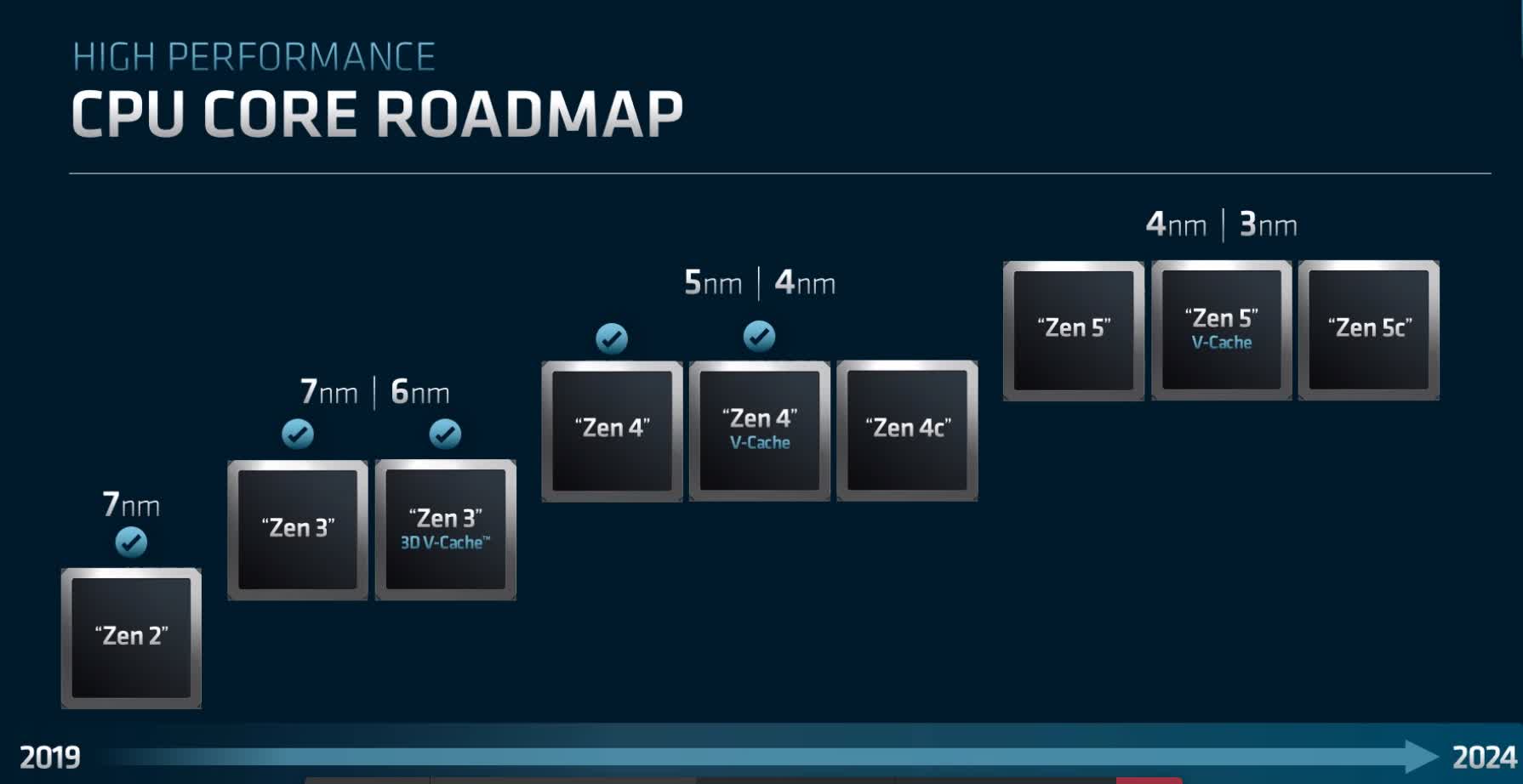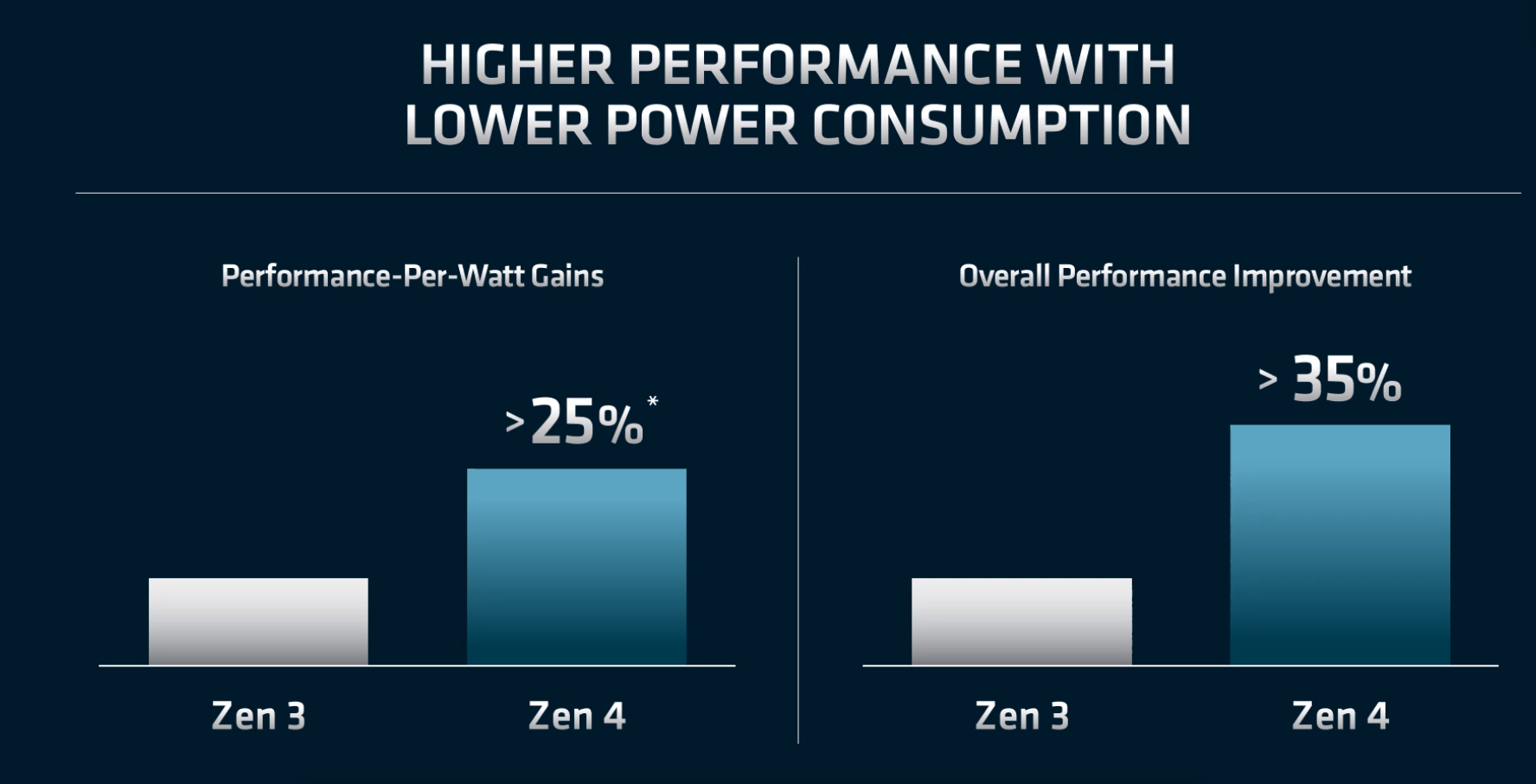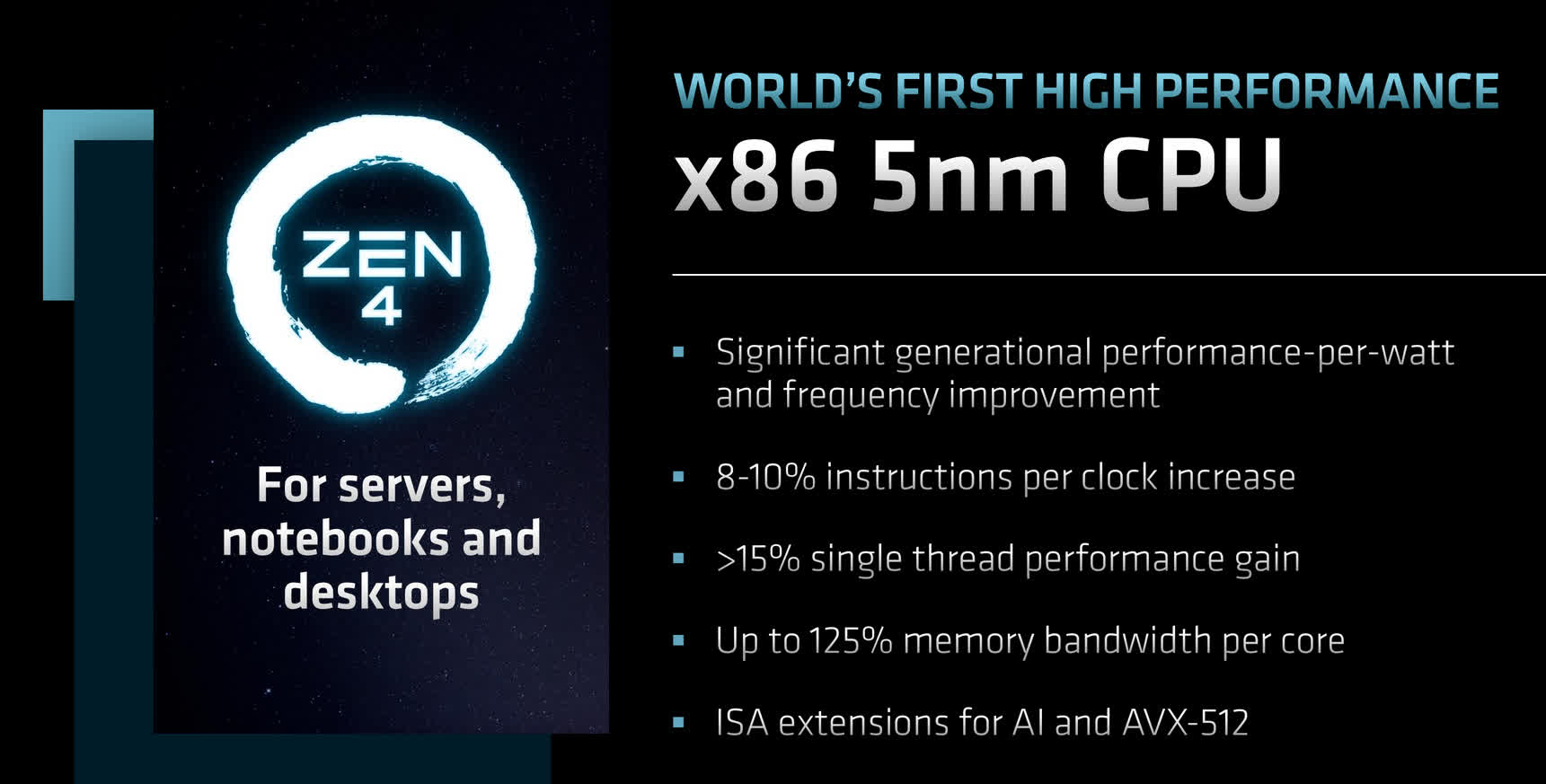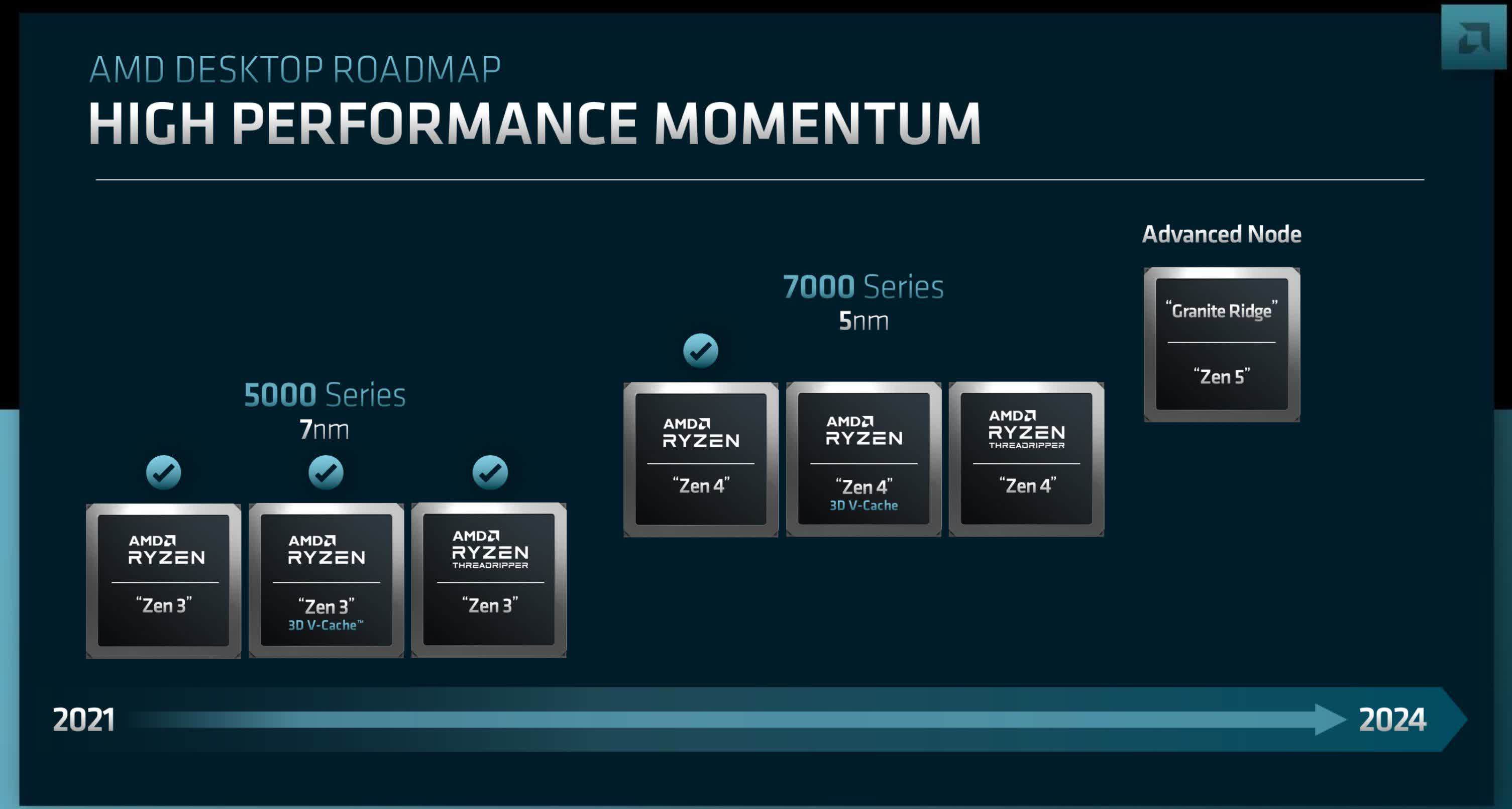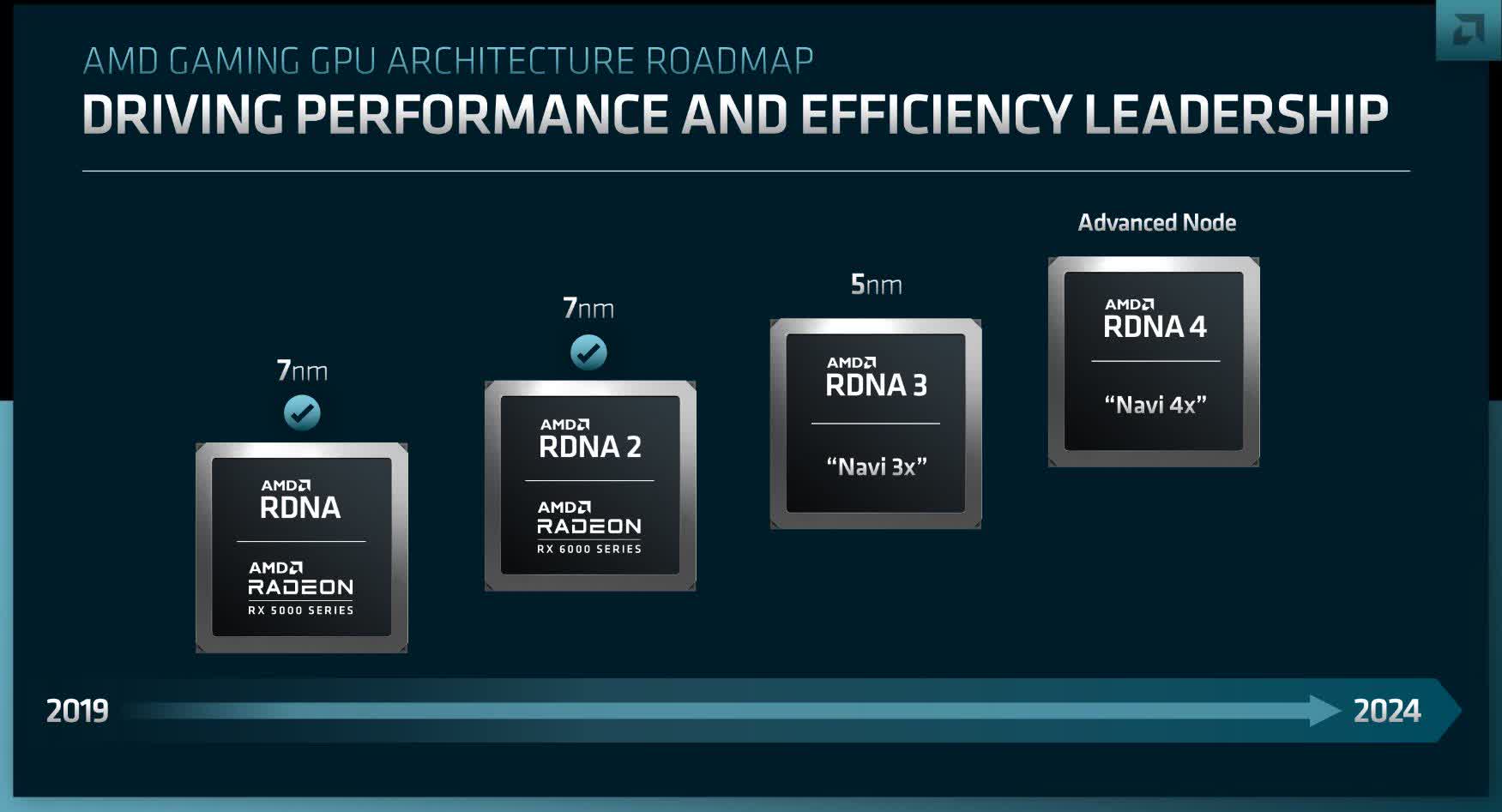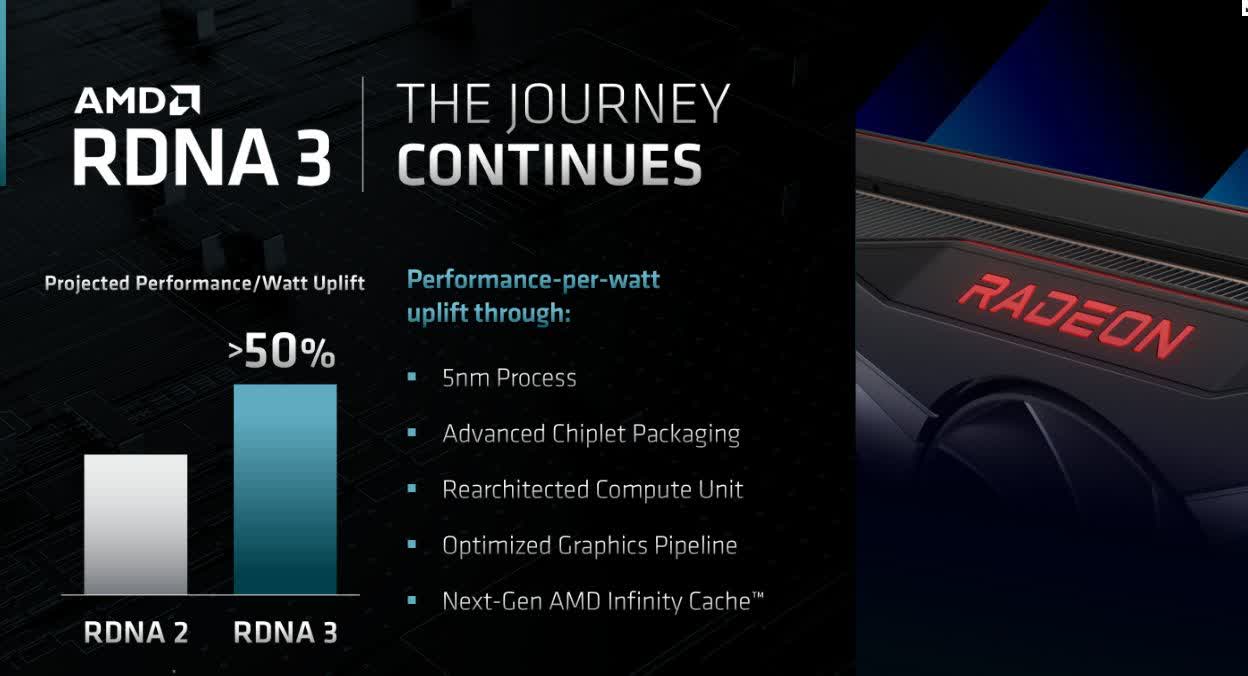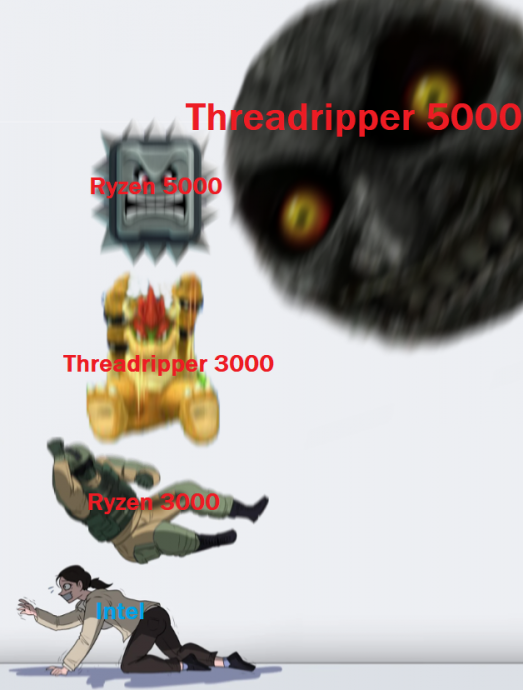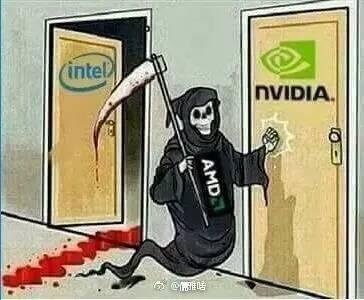Highly anticipated: AMD's Financial Analyst Day 2022 has just taken place, and with it came a slew of information about its upcoming and future processors, including Zen 4 and the next-generation RDNA 3 graphics cards. In the case of its CPUs, AMD promises a whopping 35% performance increase over Zen 3, while the GPUs offer a 50% performance per watt uplift.
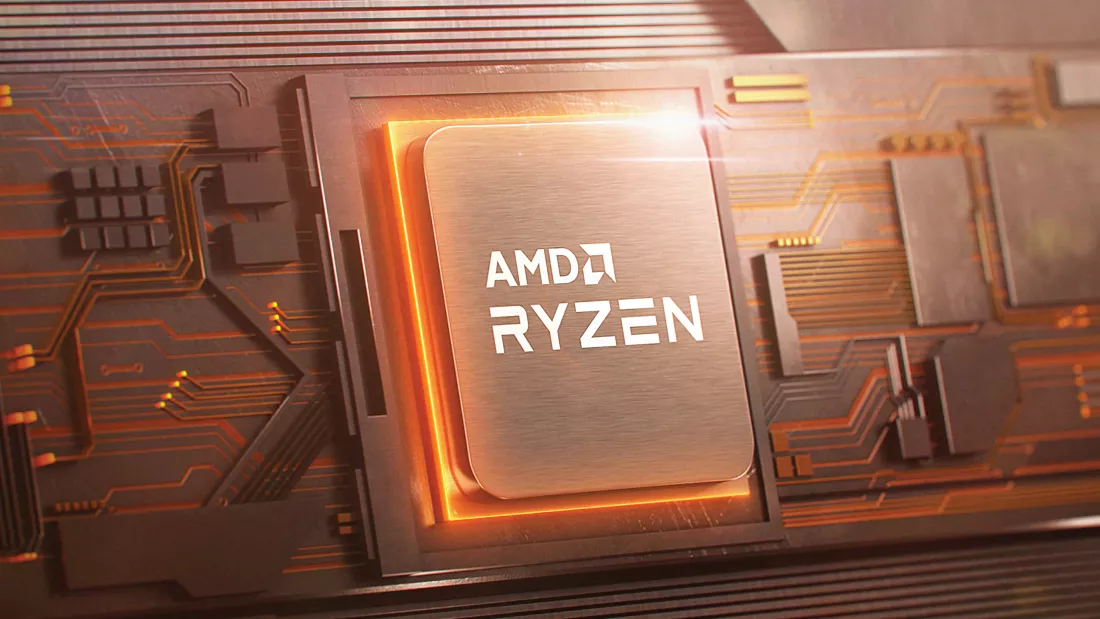
AMD's desktop CPU roadmap confirms a few facts about Zen 4. Firstly, the company's 3D V-cache technology used in the Ryzen 7 5800X3D will be part of the new processor series, though it never revealed how many chips will utilize it and whether they will launch alongside the new processors. As a reminder, the Ryzen 7 5800X3D stacks a 41mm2 die containing only L3 cache over the Zen 3 core complex die, increasing the amount of L3 cache from 32MB to 96MB.
When AMD discussed Zen 4 at Computex last month, it promised a greater than 15% single-thread performance uplift over Zen 3. It now says overall performance improvement is 35% greater than the current generation. Whether that also refers to single-threaded performance or multi-threaded (or a mix of both) is unclear.
We know increased clock speeds, an area where AMD has long stood in the shadow of Intel, will be a big part of Zen 4's performance boost. The processor it showed off at Computex, believed to be a prototype of the Ryzen 9 7950X, ran at 5.5 GHz on "most" threads when running a Ghostwire Tokyo demo, and the company later confirmed the CPU was not overclocked.
We also see Zen 4c (Bergamo) on the roadmap, which increases the standard maximum Zen 4 core count from 96 to 128, and mention of the 4nm process—an enhanced 5nm node that will be used in the mobile Phoenix Point line that mixes Zen 4 cores, RDNA 3 graphics, and Xilinx's Artificial Intelligence Engine (AIE).
Elsewhere, the roadmaps reveal that the Threadripper family will be getting the Zen 4 treatment. There have been fears that AMD was letting the brand die off, but we don't know if, like Zen 3, only the Threadripper Pro series will be part of the next-gen chips.
As for Zen 5, codenamed Granite Ridge and likely called the Ryzen 8000 series, it will be built on the 4nm/3nm processes, use the same AM5 socket as Zen 4, and is set to arrive in 2024.
Jumping to AMD's graphics cards and RDNA 3, the highlight statistic is that the architecture will offer a 50% performance per watt uplift over RDNA 2, which sounds enticing but should be taken with some salt as it will likely be a best-case scenario. We can still expect the flagships to be power-hungry. Whether they will rival the rumored RTX 4090/4090 Ti's 600W to 800W remains to be seen.
Like Zen 4, RDNA 3 will be built on 5nm process technology from TSMC. It boasts "advanced multimedia capabilities" such as AV1 encode/decode support and comes with DisplayPort 2.0 support to deliver uncompressed 4K gaming at 240Hz thanks to the 80Gbps of bandwidth.
Other new features include a reworked compute unit (CU) and next-generation Infinity Cache. We also have confirmation that RDNA 3 GPUs will return to a chiplet design, something that has been rumored for a while. It will be the first time AMD has used the design in consumer cards since the Vega era.
AMD also confirmed the existence of RDNA 4. It's based on the 3nm process and should launch in the same year as Zen 5: 2024.
The Zen 4 CPUs and RDNA 3 graphics cards are set to launch later this year.
https://www.techspot.com/news/94896-amd-roadmaps-reveal-zen-4-rdna-3-details.html
